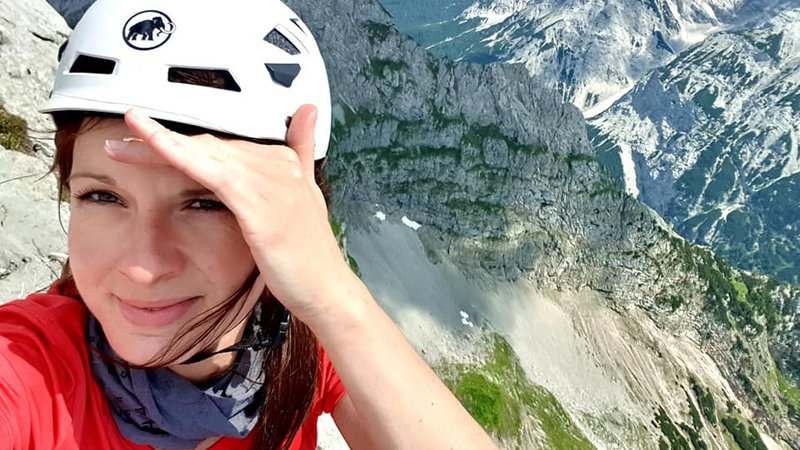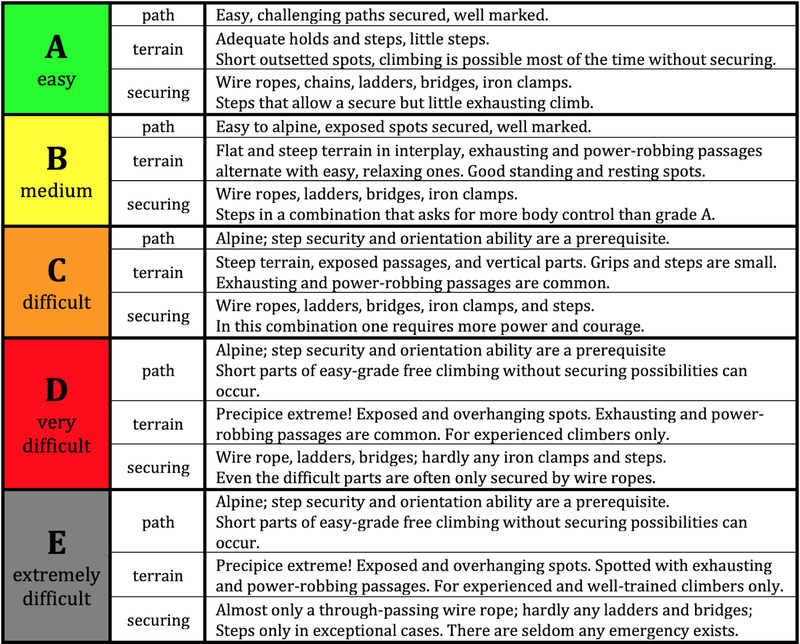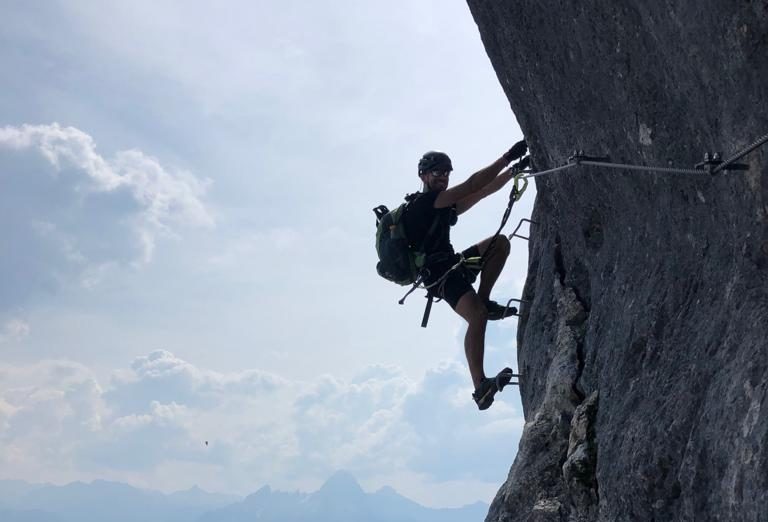
The next level in hiking for mountain enthusiasts who are always looking for adventures is “the Klettersteig” or “the Via-Ferrata.”
As for any challenging experience, you have to be aware of the risks involved in this activity. There is a price to be paid to belong to this distinct group of hikers: you always need to have the will to conquer your fear, always push towards your goal, and of course, always enjoy the ride.
Whether you are a beginner or an experienced hiker, the organizer, or just a participant, you need to consider some requirements to be safe, protect others, and have a fantastic trip.
Be aware that your tour starts with the preparation, during which there are some essential points to consider:
1. Route and conditions – which route is the right one?
Is your fitness level good enough to complete the trail? Everybody should know that to reach a specific route, you have to hike a bit before; that means you don’t have to use all of your energy before the starting point.
Be aware of the length of the route to know precisely how much hiking you have to do before and after the actual Klettersteig.
To help climbers identify which route is the best for them and understand the difficulty, each path is marked using “the International Scale”: A – easy to E – extremely difficult (the route’s indicator is placed right after the name of each route).

It is also essential to know if there are some resting places – intentionally designed places where you can catch your breath a bit, drink something, have a little snack, or maybe take some pictures. On challenging routes, starting with C and D, there are even emergency exits on the way to help climbers reconsider the tour.
When you plan your tour, the position to the sun also plays a crucial part. Therefore, you should know precisely when the actual Klettersteig will be reached (in the morning or the afternoon), as an East wall is different than a West one (slippery stones, cold temperature, or too much sun).
An excellent place to inform yourself is the Internet, and nowadays, many websites offer support for most tours – before starting, download the GPS(gpx) map and the topo for the selected route.
At the beginning of the season, you should also consider if the Klettersteig is an alpine environment and if the route is open and verified. Is snow still there?
Important notice: Do not go into closed routes! If the path is marked as closed, it means that a specialist had important reasons to close the route to the public: it may have missing parts, some sections may be under construction/replacement, or the environment might not permit a safe passage. Every route is verified by qualified personnel on a fixed period.
2. Weather – inform yourself in advance about the weather conditions
On a typical hike, one can return in case of bad weather, but on a Klettersteig, the situation is a bit more complex. If the route is wet, if it’s cold, or if the wind is strong, the chance of falling is increasing.
Consider also that a Klettersteig is a giant electricity-conducting system, and a lightning strike puts your life in danger.
In case of rain, do not let go of the metal wire! Do not unclip yourself! Please search for the immediate exit and use it.
3. Equipment – the proper gear
Mandatory gear:
– harness (waist or combi);
– Klettersteig-set with the energy-absorbing system;
– helmet: it protects you from stones that fall or protects the head from unwanted wall strokes;
– gloves: they protect you from the strands that come out of a damaged wire, and they also offer extra grip;
– shoes.
Optional: resting line (after difficulty C is helpful), sunglasses/protection glasses, sunscreen, first aid kit, phone, water (beverages), food, lamp, extra functional clothes.
Like every object, each piece of equipment has a lifetime. Therefore, be aware that the hikers must replace the Klettersteig set after ten years or after a severe fall.
4. The participants – know every person
To get the maximum from your hike, pay attention to your hiking buddies’ fitness level. All the members should have a comparable condition, similar knowledge and, very importantly, each member must be surefooted and not afraid of heights!
5. On the hike – suggestions, and recommendations
Partner-check: before entering the route, as a security measure, use the 4-eyes principle and verify each other’s equipment:
– control the fastening of the harness to the body;
– control the connection between the Klettersteig-set and the harness;
– control the fastening of helmet clips.
Keep the distance: there should always be only one climber between two fixed points.
One wire rope section should be left empty between the participants in vertical sections. Otherwise, the fall of a hiker placed above would be very dangerous for the participant placed right below them.
Communicate your intentions when overtaking someone. Do not remain unsecured or wait until the terrain permits a safe passage.
In case of rockfall, announce it to the participants located below quickly and firmly.
If you walk on easy terrain, you can secure yourself with only one carabiner(clip one of the Klettersteig-set’s carabiner to the other one). Never connect one carabiner to the metal wire and the other one to your harness (if you do this, you will bypass the energy absorber, which will lose its safety function).
Take into consideration that every participant of the hike should not be overstrained mentally and physically. Be patient and remember that everyone was once a beginner – in such case you have more time to enjoy the view.
Never forget that the hike is finished when you are back down safely!

6. Environment – protect the nature
In the mountains, we are guests, and we should act like ones. Take your garbage back with you (bottles, cans, plastic packaging). Do not light fires and camp only in permitted areas. Consider the animals around you, do not disturb them, and do not collect flowers.
By considering these points, not only will you be able to enjoy your hike safely, but you will also have a magnificent adventure to remember over the years.
- Cosmin Mihoreanu
